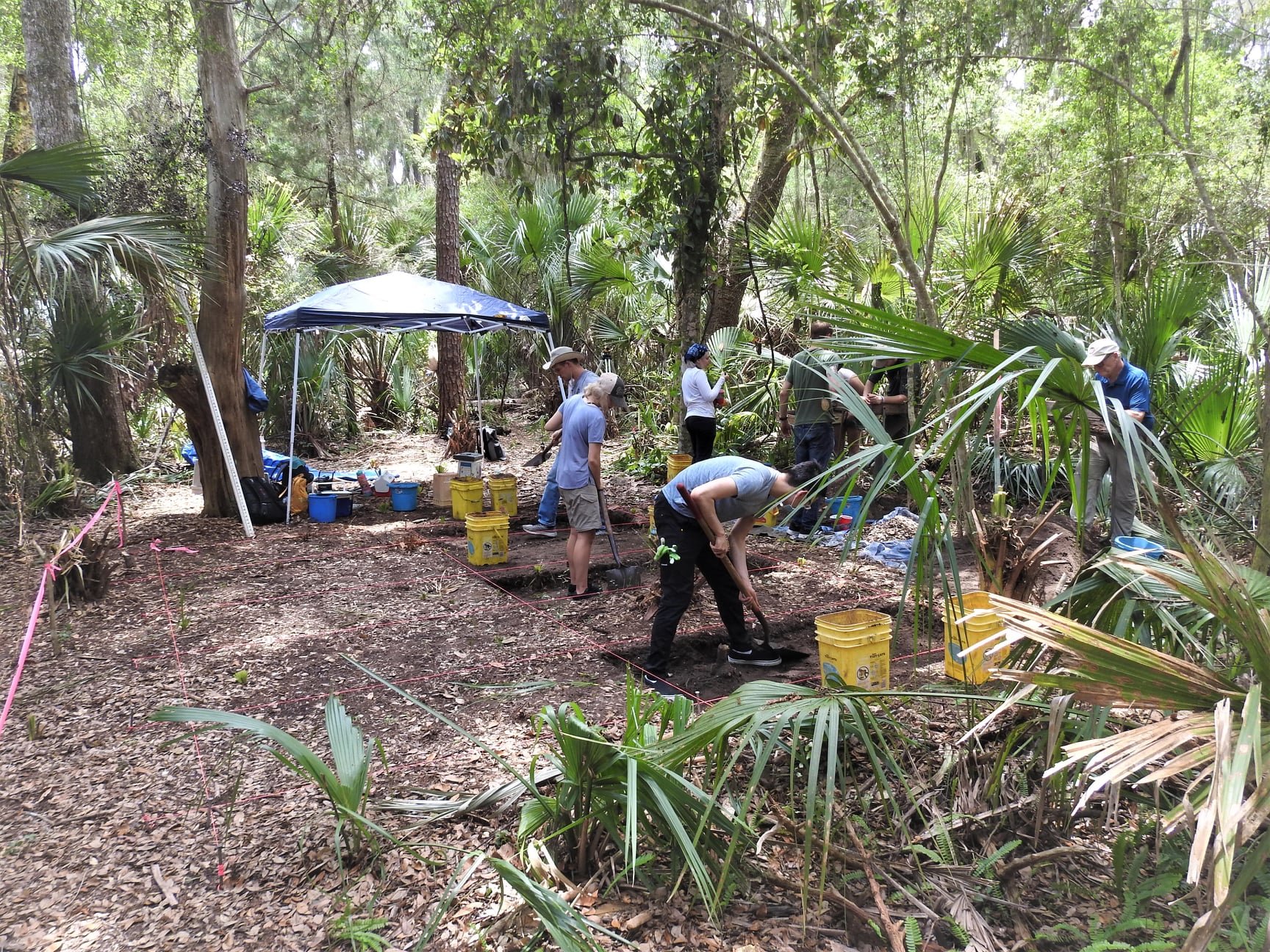Sarabay
Jacksonville, FloridaSummer 2021
In the Summer of 2021, I was able to gain my first hands-on experience in archaeological fieldwork through the University of North Florida’s structured 6-week archaeological field school. This field school is a part of the UNF Archaeology Lab’s ongoing Mocama Archaeological Project (MAP).
It was through this field school that I was able to gain a real-world archaeological experience such as, learning unit and block excavation processes, mapping and record keeping, and how to use and operate survey equipment.
This project has aided in my understanding of practical aspects of archaeology as well as how people in the past lived and interacted with their natural and cultural worlds. In the field, I learned to quickly identify different artifacts and ecofacts such as various pottery types, bone and shell tools, animal bones, charcoal, etc., and organize them for further analysis in the lab. I am very lucky to have experienced this opportunity to grow and expand both my anthropological and archaeological skills in real time, while bringing histories focus back onto the lives that the Mocama-speaking Natives lived and highlighting the importance of their community in Florida’s history.











The Sarabay Project
The archaeological site of Armellino, located on Big Talbot Island, is believed to be the location of the Mocama-speaking Timucua village of Sarabay. Based on documents written by French and Spanish chroniclers dating back to the 1560s, they describe accounts of Timucua villages with details regarding housing, granaries, and even public activity areas. Through further analysis of these documents, the chroniclers hint at the locations of some of these Timucua vistas. It was through these documents
and testing completed by the UNF Archaeology Lab that has identified this location on Big Talbot Island, to be that of the village Sarabay. The MAP is in the process of excavating broad areas in search of material culture, activity areas, and buildings associated with the village of Sarabay. With the current findings, it is the MAP’s hope to reintegrate and educate the public about the importance of the Mocama-speaking Timucua and other Indigenous peoples in our history.
Village Painting below by The Public Trust
